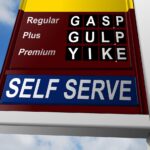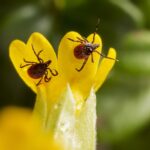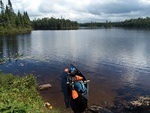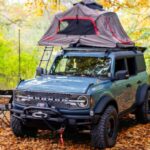
Canoe tripping. This is one of my favorite things to do in the great outdoors. I wish I could spend more time doing this. Luckily where I live in Wisconsin there are several great canoe rivers not far away where a person can go for an easy day trip, or a longer canoe and camp excursion lasting days or weeks.
Rivers in Wisconsin that come to mind right away would be; The St Croix River, The Wisconsin River, The Black River, The Chippewa Flowage and other connected flowages, The Flambeau, The Brule, The Mississippi… There are of course more, but those stick out in my mind.
And then just a short six or seven hour drive away in the northeast arrowhead of Minnesota is The Boundary Waters Canoe Area (BWCA). The BWCA is one of my favorite places on this planet to go wilderness canoe tripping.
Canoe Tripping And Wilderness Camping – The Boundary Waters Canoe Area
People tell me I am lucky to live in northwest Wisconsin – it has some great hunting, fishing, canoeing, motor-boating, hiking, camping… and they are right, I have it all in my part of the state. And just several hours further north there is the beautiful Boundary Waters Canoe Area, and just across the border into Canada there is Quetico.
For people that have never heard of the BWCA, or who have but really don’t know anything more about it than it’s name, the BWCA is a 1,090,000-acre wilderness within the Superior National Forest in northeastern Minnesota under the administration of the U.S. Forest Service. It is a heavily forested area crisscrossed with glacial lakes and streams.
When you think of the BWCA you should try and picture the following: Deep birch and pine forests, rivers, streams, gin clear lakes, hiking trails, connecting lake portages, moose, wolves, bear, waterfalls, rapids, fresh clean air… the list goes on and on.
The BWCA is one of the largest assets of our National Wilderness Preservation System, containing the largest remaining old-growth forest that can be found east of the Rocky Mountains.
In 1978 the area was set aside to be protected as a primitive wilderness area with limited to no access for motorboats, snowmobiles, and other types of man-made intrusions. If you like to canoe, camp, fish, hike, and live with with mother nature, the BWCA is someplace you would love to visit. It has well over 1,000 lakes connected with portages, most of them are limited to only paddle craft such as canoes or kayaks.
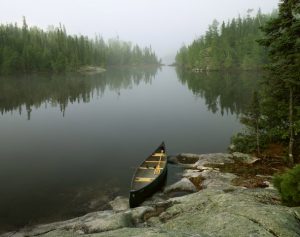
If you are looking to get away from the noise and the general hustle and bustle of everyday society, then the BWCA is the place to go. Head out into the wilderness with a canoe and some basic camping supplies – get back to nature!
There are specific entry points into the BWCA that are controlled by the Forest Service. Each entry point has a limited number of permits given out per day. You need to register and pay for a permit to enter the area. If an entry point has met its daily quota, you can’t get a permit for that access area. So most people who plan this types of trips have to plan in advance if there is a specific entry point they want to use. You can register in advance.
With that said, some entry points allow as many as thirty permit holders per day, while others only allow for a single permit entry per day. It all depends on the lakes near the access point.
Canoe Tripping In The BWCA
Most people use canoes when heading into the BWCA. Some use kayaks. Personally for longer trips I think the canoe would be the boat of choice; it can hold more gear. And there are solo canoes you can buy or rent that are great for people looking to make trips alone into the wilderness, a sort of best of both worlds between canoe and kayaks.
Many of the lakes in the BWCA are connected by streams or small rivers. Some of the lakes you can canoe from one into the other without an issue. Then there are other lakes where the streams between them contain rapids… sometimes the rapids aren’t that bad and you can ‘run them’ in your canoe. Other times they are dangerous and contain waterfalls between the lakes, in which case you will need to portage your canoe overland to avoid the rapids and falls in order to get to the next connecting lake.
Then there are lakes that are close together, but not connected by streams, but there are portage trails between them that are maintained by the U.S. Forest Service.
When you portage your canoe you end up taking your backpack and camp gear out and hauling it overland, on a marked trail, to the next lake. You also end up packing up and hauling your canoe on your shoulders using a ‘yoke’ to the next lake.
Some portages are small, maybe just a dozen yards or so. Then there are some that are as long as a mile or more.
Carrying a canoe and your gear can be hard work, but usually if you pack light with the just the essentials it can sometimes be done in a single carry from one lake to the next. All your gear in a big heavy backpack strapped to your shoulders, then the canoe on the top of your shoulders and off you go.
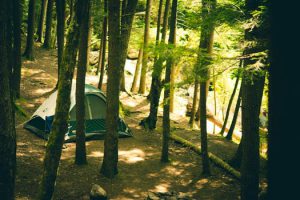 Some portages are muddy, some are rocky, some are up hill, some are down hill… and some are all of those things. You may be walking through a marsh on narrow planks the Forest Service put there, or you could be walking over a wide, flat, and dry trail. It can vary considerably from one portage to the next, depending on the land you need to hike through to get to the next lake.
Some portages are muddy, some are rocky, some are up hill, some are down hill… and some are all of those things. You may be walking through a marsh on narrow planks the Forest Service put there, or you could be walking over a wide, flat, and dry trail. It can vary considerably from one portage to the next, depending on the land you need to hike through to get to the next lake.
Types Of Trips In The BWCA
Some canoe campers like to see as many lakes as they can on their vacation. They will camp each night on a new lake, and during the day travel across many lakes and take many portages.
Others like to do what is called base camping. They may spend the first day in the BWCA traveling on only a couple lakes until they find a good campsite to call home. And then they stay put for their entire vacation and explore the area around their camp with short canoe and hiking excursions.
More than likely doing either of those kind of trips you are going to see other canoe campers. People who head further into the BWCA lake system, and away from the entry points, are going to see less people.
The BWCA Has It All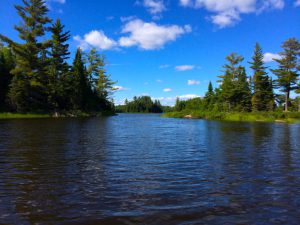
If you enjoy camping, fresh air, lakes and streams of clear and clean water, fishing, swimming, hiking, exploring a wilderness setting, bird watching, animal watching, wildlife photography, communing with Mother Nature… The Boundary Waters Canoe Area has all of that and so much more.
Its a great place to go and replenish your soul and ease your spirit.
I’m planning a trip or two next year in 2018 into the BWCA. I’ll share my planning and preparations here on this website. It all starts with pouring over my BWCA maps.
So stay tuned… I’m also looking to do trips in Woodland Caribou Provincial Park!
TD

